 |
 |
 |
| |
Impact of Pre-Screening with Fibrosis-4 Index on a Referral Pathway for Patients with Suspected NAFLD
|
| |
| |
Reported by jules Levin
AASLD 2018 Nov 9-13 SF
Tracy Davyduke RN, MIPH, Alberta Health Services
Juan G. Abraldes MD, MMSc, Professor of Medicine, University of Alberta
Puneeta Tandon MD, FRCPC, MSc, Associate Professor, University of Alberta
Dr. Mang Ma MD, FRCP- Professor, University of Alberta
from Jules: I say no, FIB-4 alone is not adequately reliable to find fibrosis.
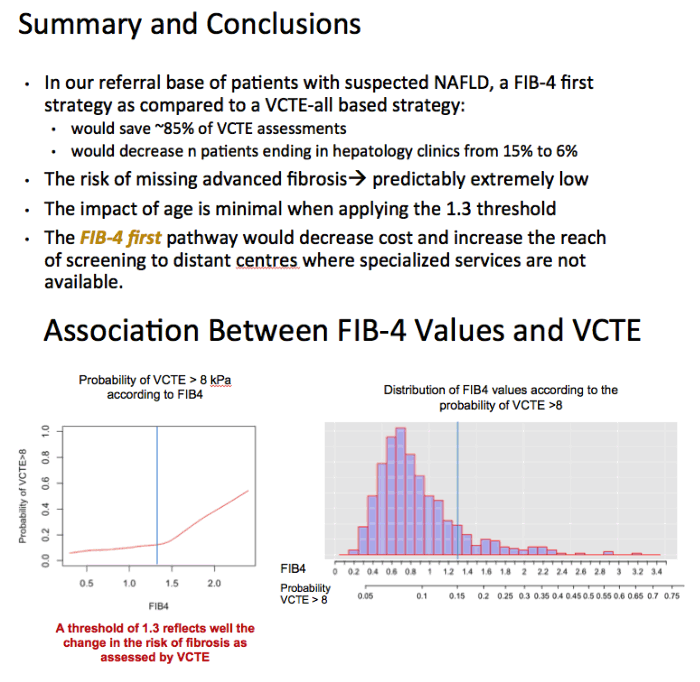
-------------------------
a FIB-4 score cutoff ≥1.1 had sensitivity, specificity, PPV and NPV of 70.27%, 66.67%, 52% and 81.36%, respectively with AUC of 0.74. APRI is more accurate noninvasive test for assessing advanced liver fibrosis in ESRD patients as compared to FIB-4. When comparing the two noninvasive parameters, APRI score is more sensitive and specific test in predicting liver fibrosis, while FIB-4 score, although useful, is less accurate in this regard. https://www.ncbi.nlm.nih.gov/pmc/articles/PMC5874486/
The FIB4 does not distinguish between a fatty liver and steatohepatitis and it should not be used to diagnose NASH. The potential use of FIB4 should be restricted to subjects with suspected NAFLD to evaluate the likelihood of having advanced or no fibrosis. The median FIB4 score was 1.11 (IQR=0.74-1.67). The jackknife-validated AUROC for FIB4 was 0.802 (95% CI: 0.758, 0.847) which was higher than that for the NAFLD fibrosis score (0.768 CI:0.720-0.816, p= 0.09), Goteburg University Cirrhosis Index (0.743, CI:0.695-0.791, p< 0.01), AST:ALT ratio (0.742, CI:0.690-0.794, p< 0.015), AST to platelet ratio index (0.730, CI:0.681-0.779, p< 0.001), AST to platelet ratio (0.720, 0.669-0.770, p< 0.001), BARD score (0.70, p< 0.001) and cirrhosis discriminant score (0.666, CI:0.614-0.718, p< 0.001). For a fixed specificity of 90% (FIB4 = 1.93), the sensitivity of identifying advanced fibrosis was only 50% (95% CI: 46, 55). A FIB4 ≥ 2.67 had an 80% positive predictive value and a FIB4 index ≤ 1.30 had a 90% negative predictive value. 378 patients (72% of the cohort) had a FIB4 index below 1.30 or above 2.67; in these 378 subjects, the FIB4 identified the absence or presence of advanced fibrosis with 89% accuracy. 163 subjects (30 %) had FIB4 values in the indeterminate range (1.3-2.67). Assuming that a liver biopsy could be appropriately avoided in those who had a true negative or true positive test result, 62% versus 42% of biopsies (p< 0.007 by Fisher's Exact test) would have been appropriately avoided with the FIB4 versus the NAFLD score if one was evaluating subjects for advanced fibrosis (Figure 2). 8% vs 23% of subjects would have been inappropriately managed by the FIB4 and NAFLD scores respectively (p< 0.005). If the objective was to search for any fibrosis at all, 45% of cases would be appropriately identified by the FIB4 scores while 45% would be in the indeterminate range.
https://www.ncbi.nlm.nih.gov/pmc/articles/PMC3079239/
----------------------------
program abstract
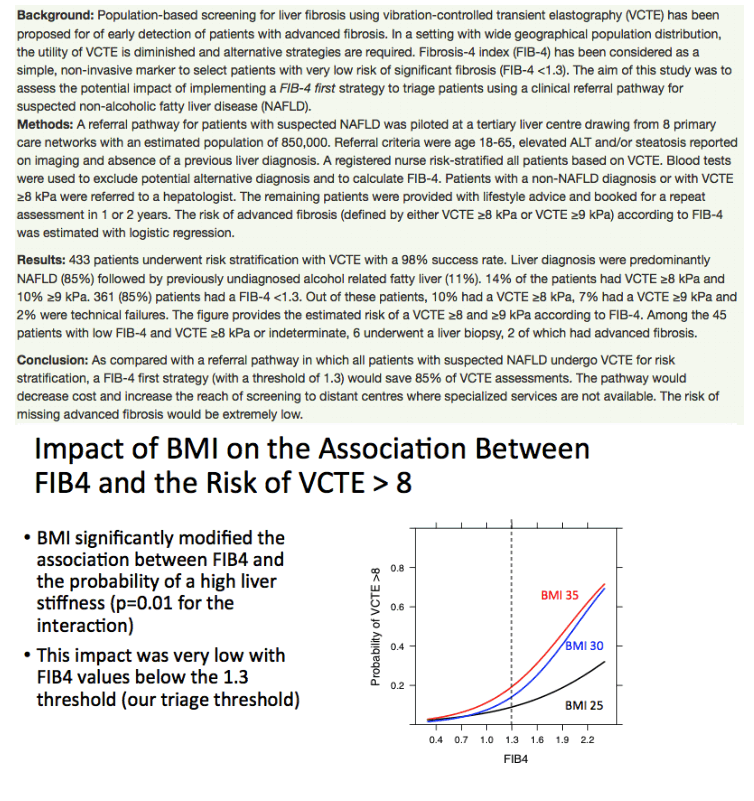
(1) Wells et al. Can J of Gastro and Hep, 2016
(2) Liver Disease in Canada: A Crisis in the Making. Published by the Canadian Liver Foundation 2013
https://www.hepatitisc.uw.edu/page/clinical-calculators/fib-4,
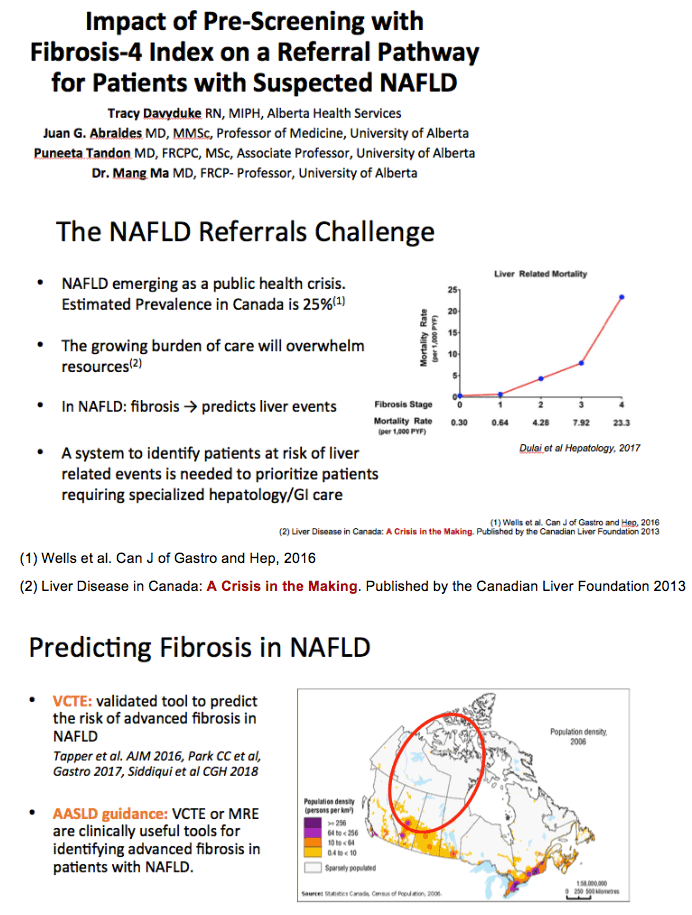
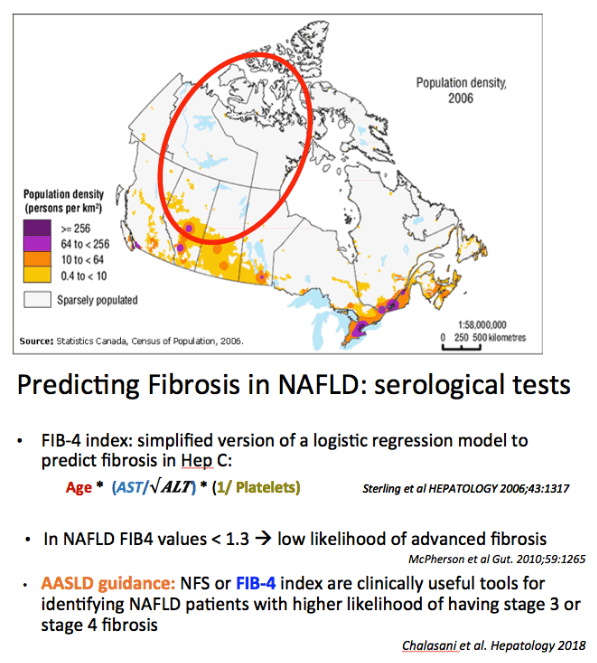
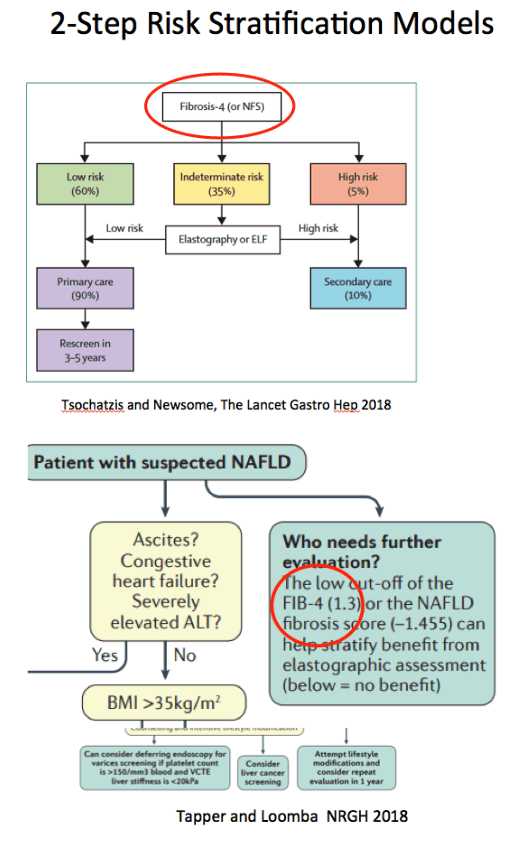
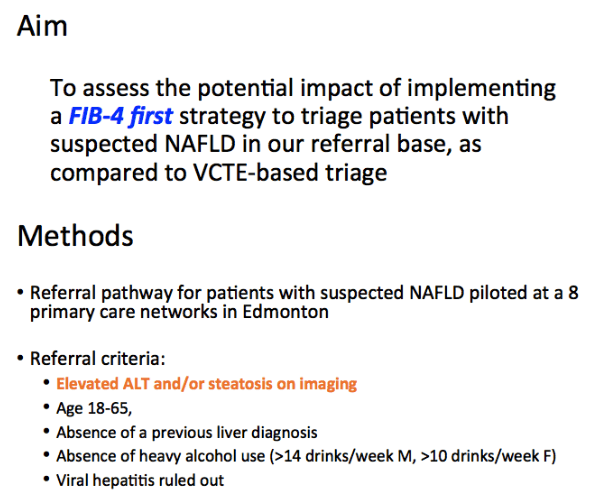
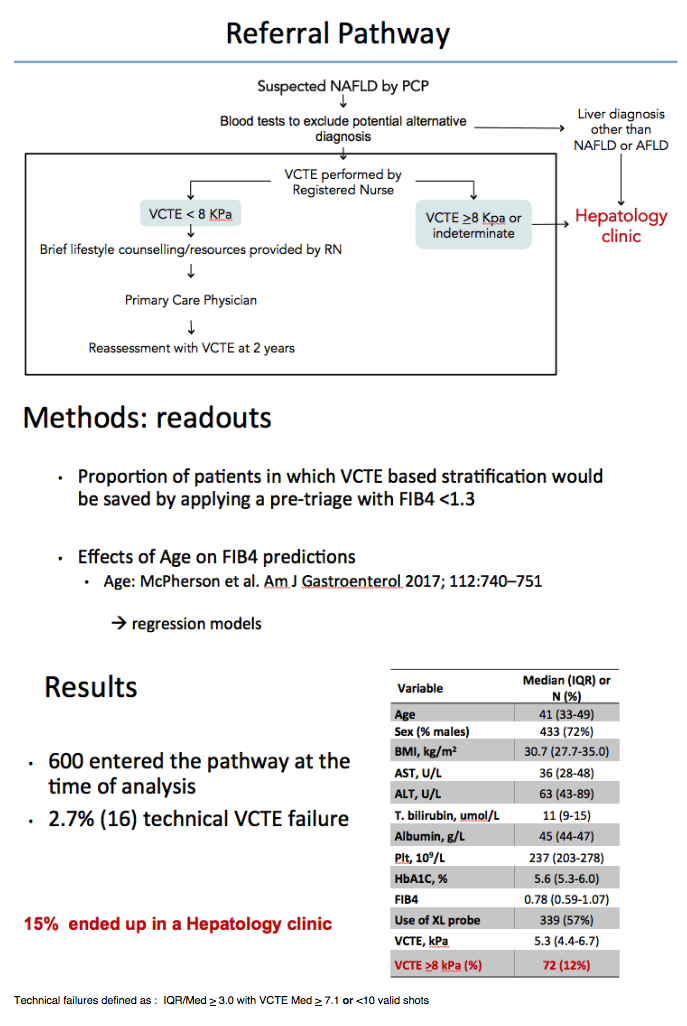
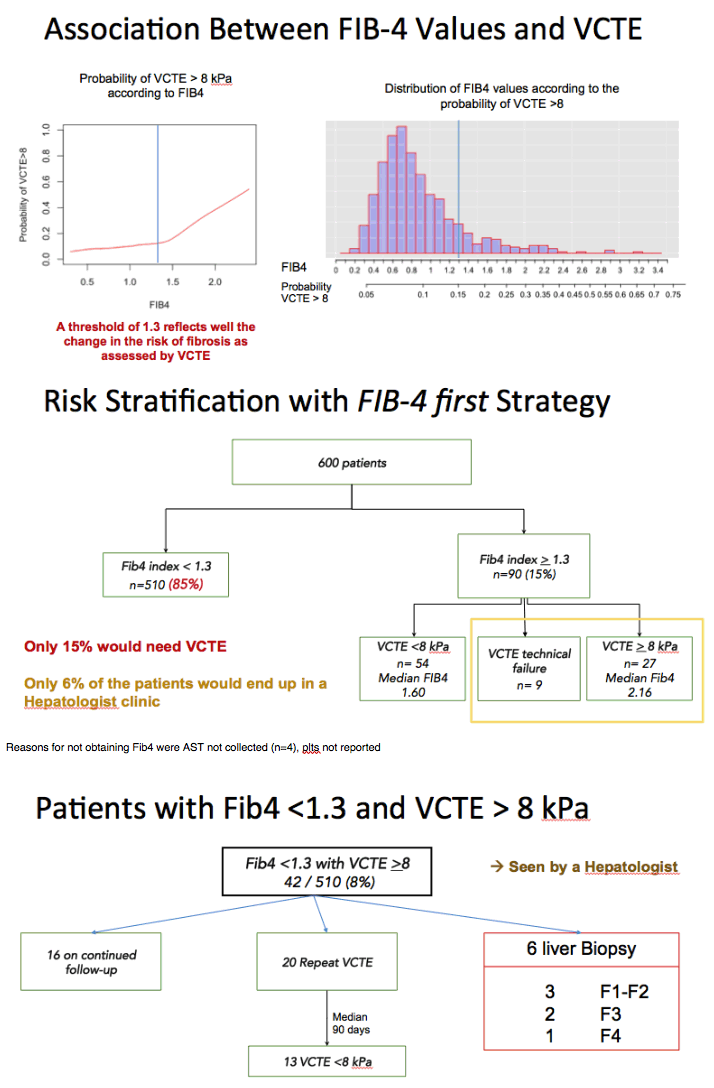
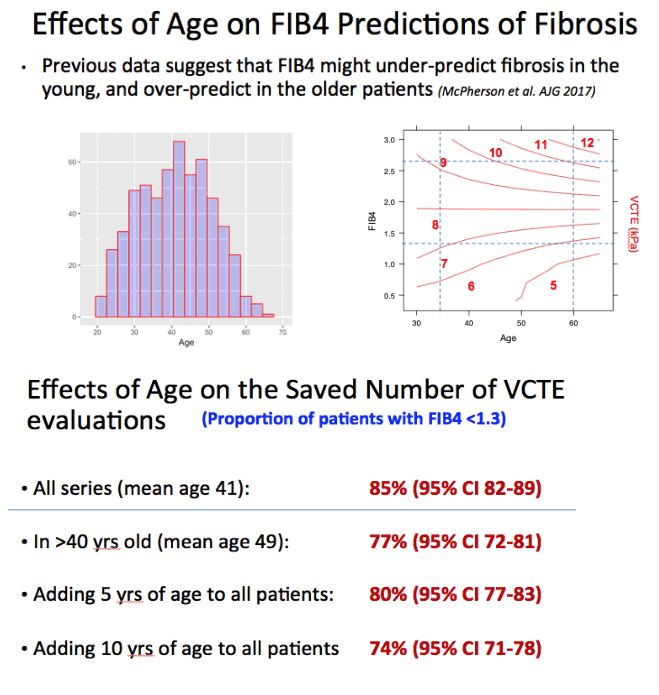
|
| |
|
 |
 |
|
|